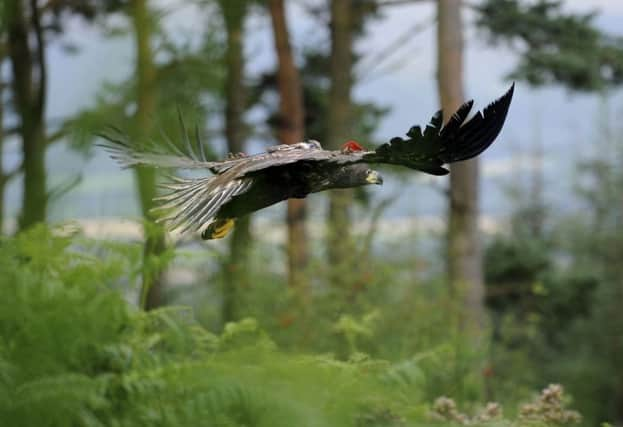Sea eagle attacks logged in West Highlands


The sea-eagle management scheme is being established in response to growing numbers of complaints from farmers that the birds of prey, which were reintroduced to Scotland in the 1970s, are killing lambs.
One farmer in Caithness said she could lose up to 50 lambs a season to sea eagles, which can have a wingspan of up to 8ft.
Advertisement
Hide AdAdvertisement
Hide AdThe project will be administered by Scottish Natural Heritage (SNH) and run by a panel including members from the National Farmers Union, RSPB Scotland, Forestry Commission Scotland and the Scottish Crofting Federation.
It will operate across Wester Ross, Skye and Lochalsh and Argyll and Lochaber until 2018, investigating all issues involving the impact of a thriving sea eagle population on livestock.
Reports of sea eagles snatching lambs have emerged in recent years as the number of birds has grown. Ross Lilley, SNH sea eagle scheme manager, said: “We would like to ask all farmers and crofters who experience issues with sea eagles and livestock to contact their local SNH office. The staff at the local SNH office will arrange for someone to respond and investigate on behalf of the group.”
However, Fiona Gibson, of Sand Farm near Gairloch, said she had reservations about the scheme.
“You wonder if it’s just another paper exercise because SNH and the RSPB have not admitted the scale of the problem over the years,” she said. “They need to be more pro-active and work more closely on the ground with farmers and crofters.”
She said if it was a successful breeding year for the sea eagles and offspring survived, her farm could lose between 20 and 50 lambs in a season.
Sand Farm has tried a range of measures to deter the raptors, including putting alpacas in the fields, installing inflatable scarecrows and, this year, using a bird hide with mirrored sides.
“The financial impact of sea-eagle predation on farmers and crofters is huge,” said Mrs Gibson.
Advertisement
Hide AdAdvertisement
Hide AdLachie Maclean, a Mull farmer and chair of the Argyll and Lochaber stakeholder group, said: “Funding for the new scheme has been substantially increased.
“The panel is keen to record all incidents of reported sea eagle impacts as the population continues to expand into its former range.
“Only by thoroughly understanding the part sea eagles play in livestock losses can we work together to develop ways to deal with any losses.”
FOLLOW US
SCOTSMAN TABLET AND MOBILE APPS